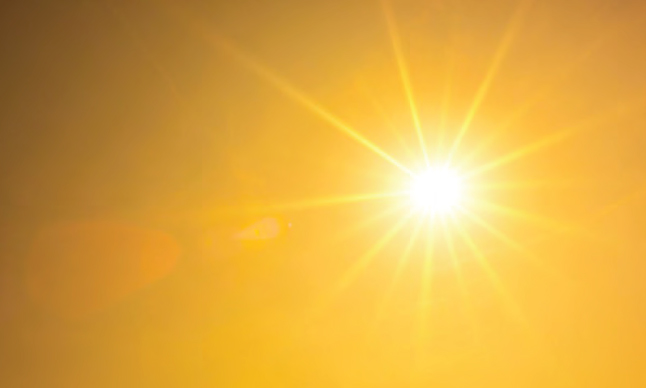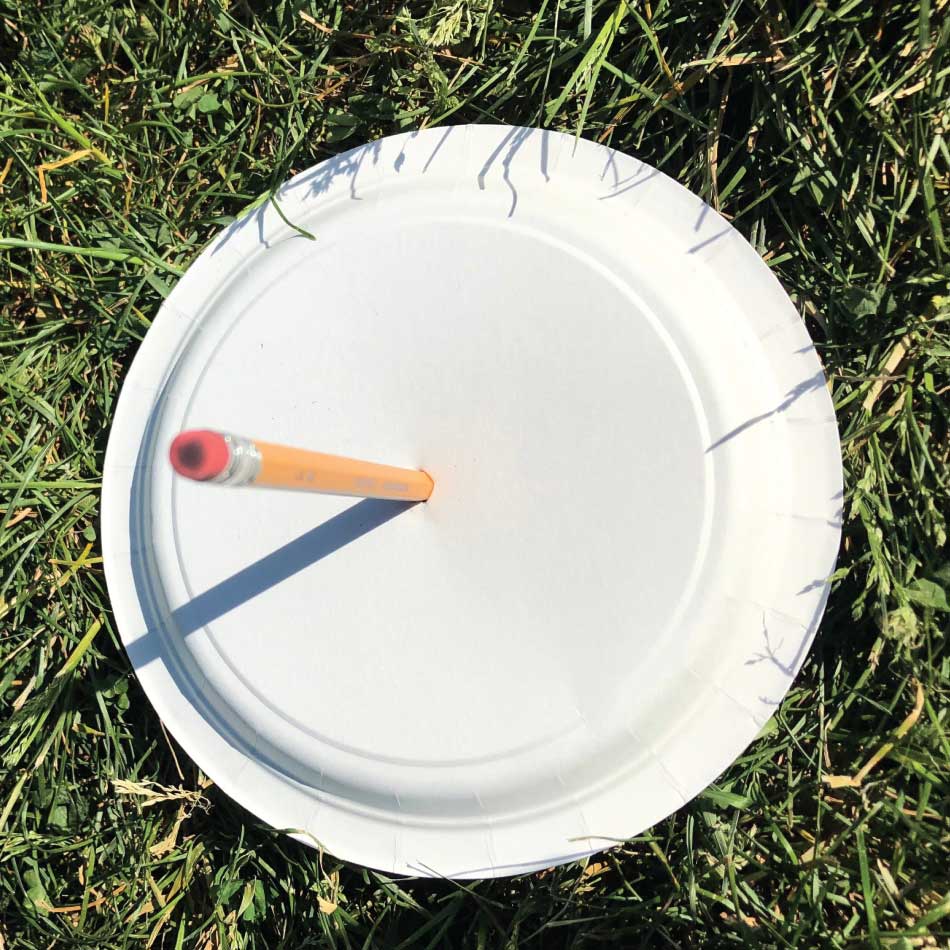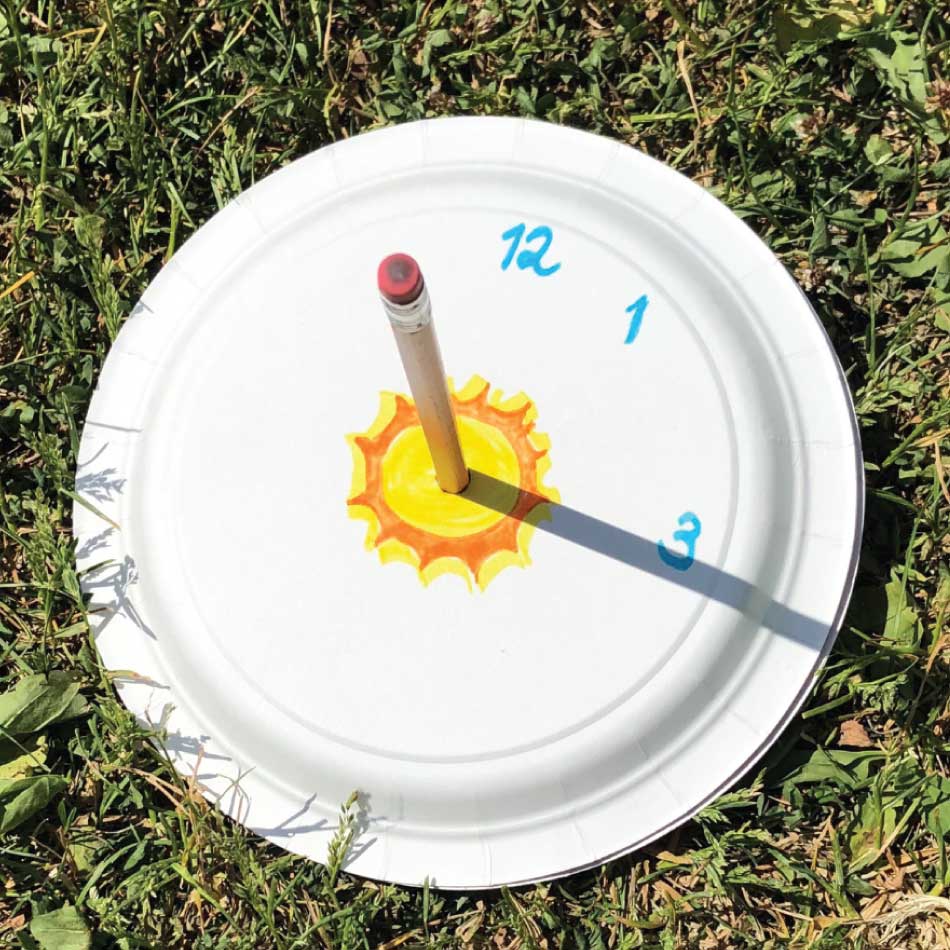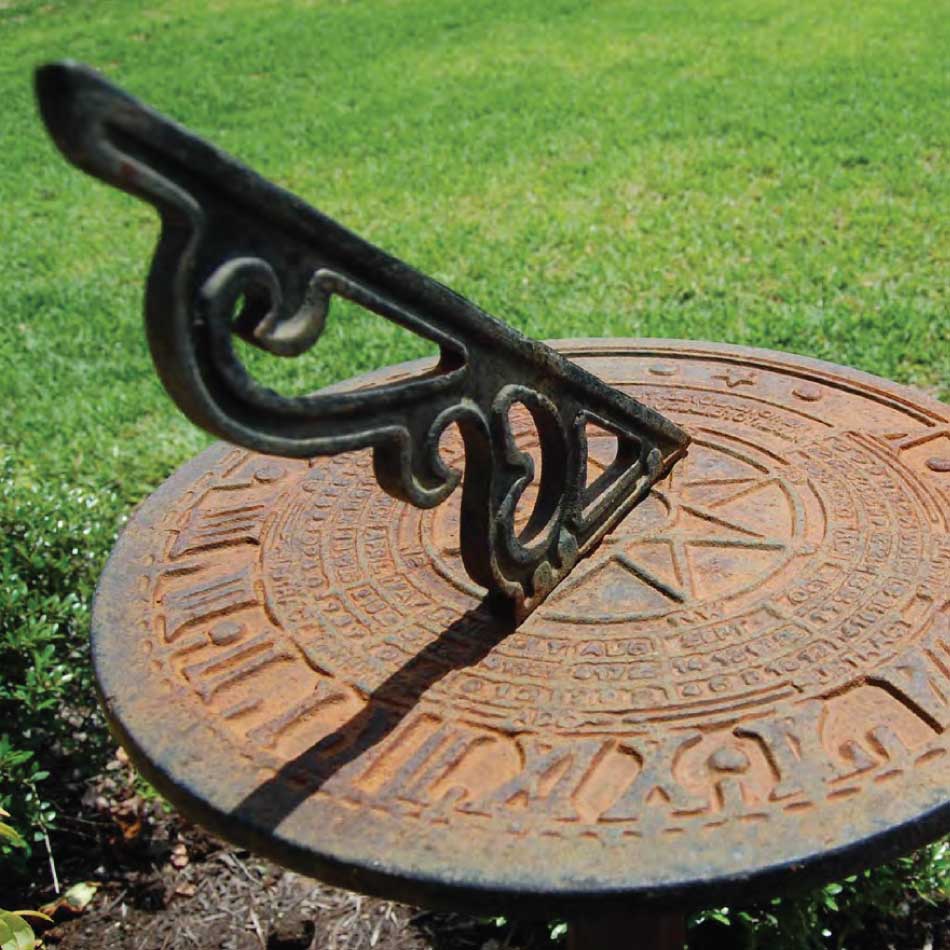Make a Sundial
Chart the passage of time at home.
- All
- Things to Make
- Experiments
- Get Outside

What you’ll need:
- 1 paper plate (or a circle cut out of cardstock or cardboard)
- 1 straw (or a pencil, chopstick or skewer)
- 1 pointed object (like a sharpened pencil)
- Rocks (optional)
- Sidewalk chalk (optional)
- Compass (optional)

Prepare:
- Use a pointed object, like a sharpened pencil, to carefully poke a hole through the centre of a paper plate. If you don’t have a paper plate, you can cut out an 8-inch-diameter circle on a piece of thick cardstock.
- Place the straw or pencil in the hole you made.
- Write the number 12 at the edge of your sundial for 12 p.m. (noon).

Experiment:
- Bring your sundial outside in an open space on a sunny day, shortly before noon.
- Rotate your sundial until the strawʼs shadow aligns with the number 12. Your sundial will now look like a clock!
- Slightly angle the straw or pencil in the direction of the shadow so it points north (if you have a compass, you can confirm the direction).
- Secure your sundial in place using rocks.
- Return to your sundial one hour later to check the position of the shadow. Has it changed?
- Write the number 1 at the edge of the plate where you see the shadow.
- Continue to record data on the edge of your plate based as the shadow moves throughout the day.
Why is the shadow moving? Note when the shadow is longer and shorter. Why do you think the shadows changed their length?
Take your sundial outside on a later date to see if you can use it to predict the time based on the Sunʼs shadow. Was your prediction correct? Why or why not?
NOTE: If you are unable to leave your sundial unattended for several hours, you can bring it back and forth with you for each measurement, BUT you must return to the same location where you were standing and face the same direction you were facing each time.

Experiment extension:
Create a human sundial! Have a friend or family member trace your shadowʼs outline using sidewalk chalk and then return to the same location later in the day to trace a new shadow. Did the shadow change?
If you have a sandbox or youʼre at the beach, you can also make a sundial with a straight stick in the centre and stones around it to mark the hours.

How does it work?
As the Earth rotates, the Sun appears to move across the sky, marking the passage of a day. A sundial helps to measure the time and is made up of a vertical object or “gnomon” that casts the shadow, which in this case is our straw, and a flat surface called a dial. The length of shadow changes with the position of the Sun. That means, the higher the Sun is above the horizon, the shorter the shadow. The Sun is highest in the sky in the northern hemisphere during the summer solstice due to the tilt of the Earthʼs north pole towards the Sun. How does the length of your shadow on the summer solstice compare to its length at different times of year?